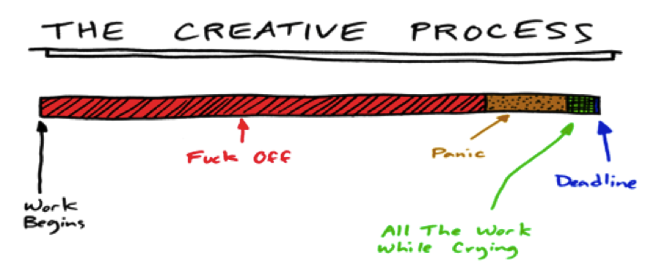How the process is often perceived:
A more useful, operational approach for this class:
I. Assess the problem—the “Design Question”:
1) Identify the problem, question, or challenge with the intent and desire to work on it.
2) Identify the "given circumstances" of the puzzle (the "facts" and parameters, as far as you can tell) including the unknowns (the questions you have).
II. Understand the context in which the design question exists:
1) How and to whom is the design question pertinent?
2) If the context changes, is the design question, given circumstances, or unknowns affected?
III. Research and prototype:
1) Gather pertinent information (research) and explore the possibilities and perspectives openly and without prejudice. (Information guides exploration, exploration requires further information).
2) Synthesize what you discover to generate ideas: create, experiment, risk, fail & MAKE iteratively. "Mistakes" offer knowledge.
IV. Evaluate, Iterate, and Refine:
1) Evaluate your results by yourself and by presenting to others. Be open to critique. When critiquing others, be honest, but kind and positive. Use terms like “what if?”, and “How could we?” to introduce your critique. Identify what is positive as well as what still needs work.
2) Repeat steps III and IV as needed. Get out of your own way; iterate based upon knowledge and experience.
V. Know when you are done!
This is the process you should follow with each of the projects in the class. Keep track of your progress at each step of the way in your sketch books. Note any problems with particular parts of the process, or if you diverged from the process at all. You can refer to your notes when presenting your project to the class.
A Creative Process

